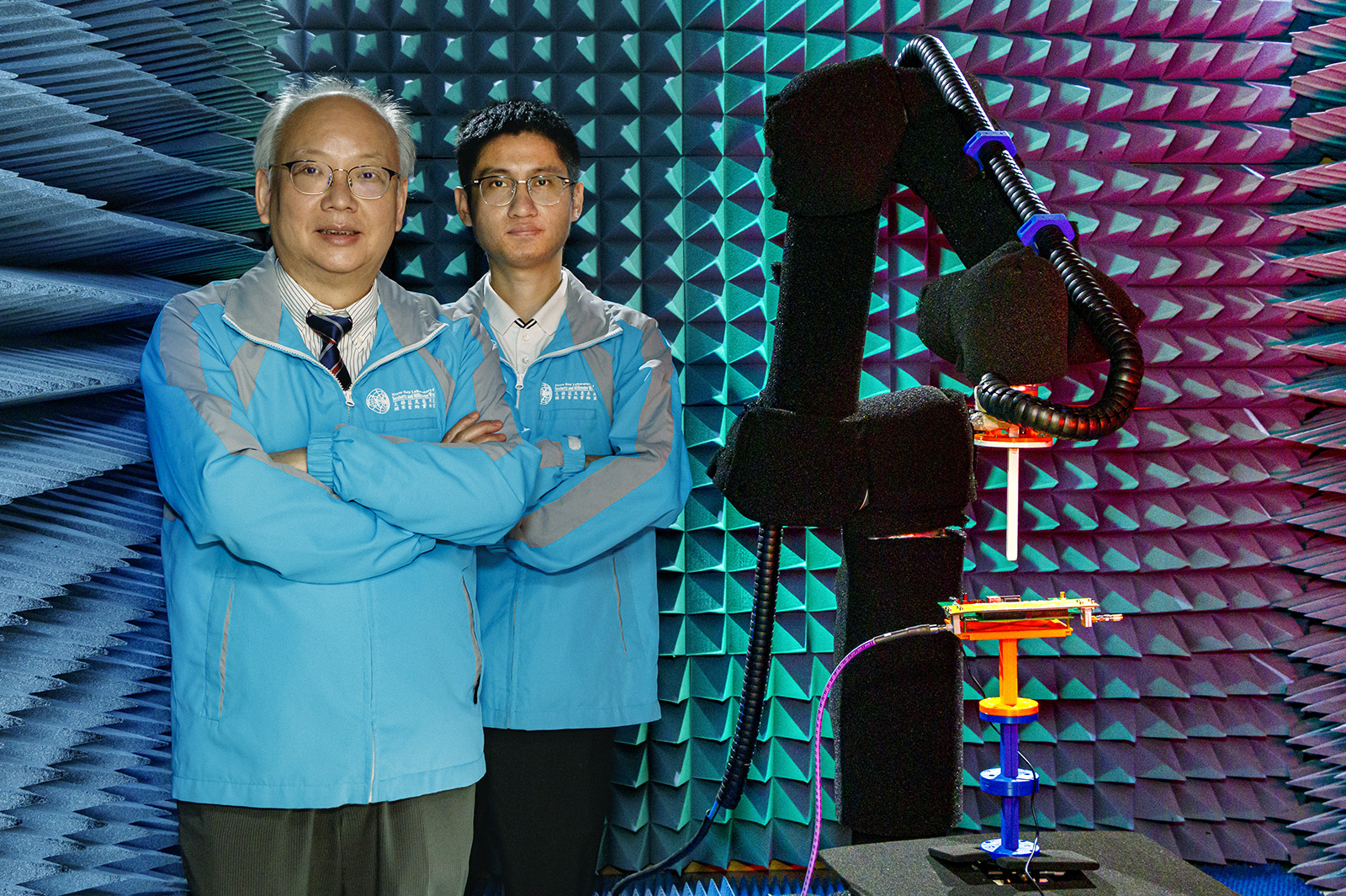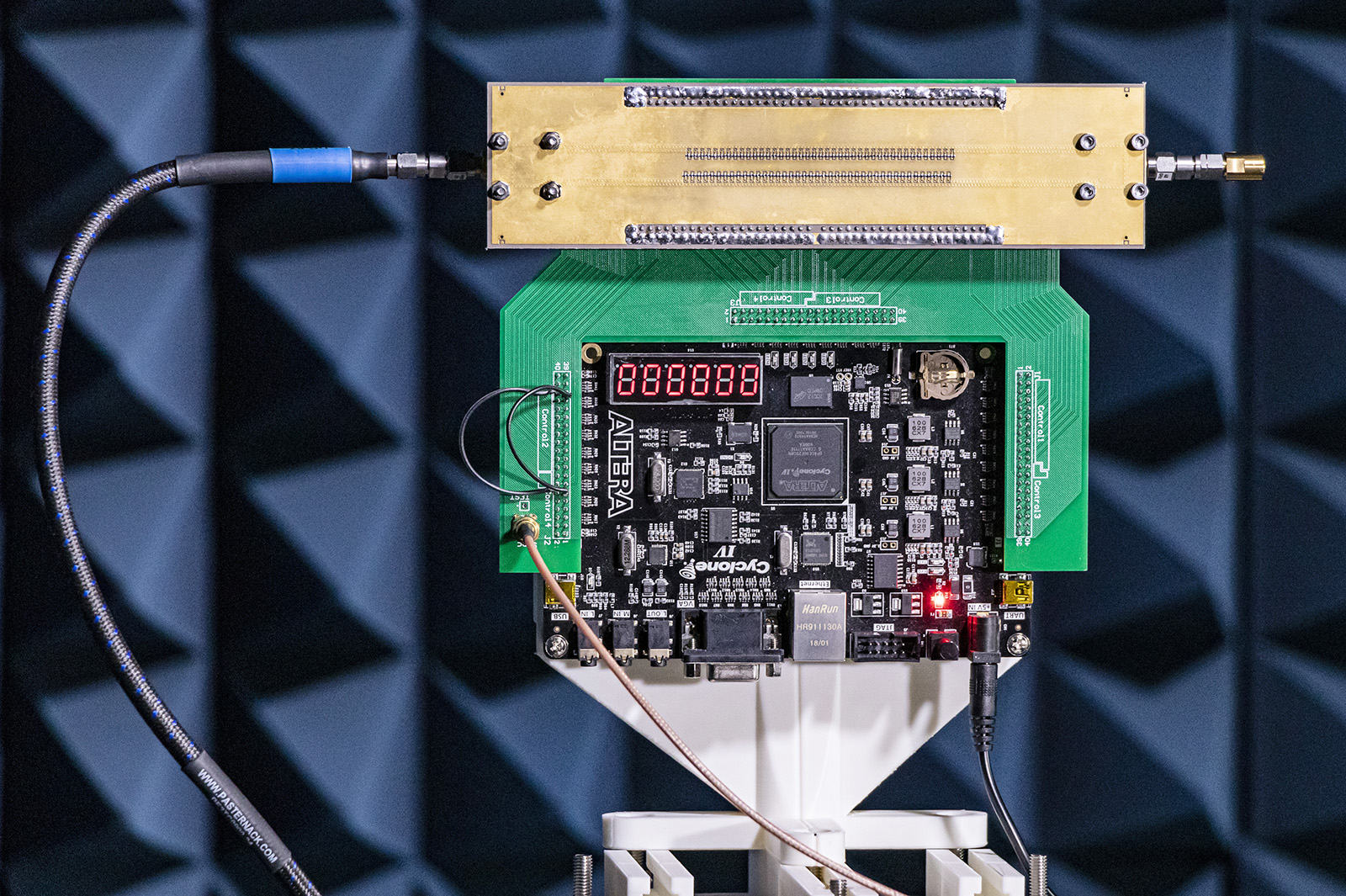New-generation antenna developed at CityU promotes 6G wireless communications

A research team led by Professor Chan Chi-hou, Acting Provost and Chair Professor of Electronic Engineering in the Department of Electrical Engineering at City University of Hong Kong (CityU), has developed a new-generation antenna that allows manipulation of the direction, frequency and amplitude of the radiated beam and is expected to play an important role in the integration of sensing and communications (ISAC) for 6th-generation (6G) wireless communications.
The new-generation antenna is called a “sideband-free space-time-coding (STC) metasurface antenna”. One of its innovative features is that there are many switches on its surface, and the response of the metasurface can be changed by turning on and off the switches to control the electric current, thus creating a desired radiation pattern and a highly-directed beam.

Structures and characteristics of traditional antenna cannot be changed once fabricated. However, a significant feature of the new-generation antenna is that the direction, frequency, and amplitude of the radiated beam from the antenna can be changed through space-time coding software control, which enables great user flexibility.
Professor Chan, who is also Director of the State Key Laboratory of Terahertz and Millimeter Waves (SKLTMW) at CityU, said that the energy from the radiated beam of the new-generation antenna can be focused to a focal point with fixed or varying focal lengths, which can be used for real-time imaging and treated as a type of radar to scan the environment and feedback data.
Dr Wu Gengbo, postdoctoral fellow at CityU’s SKLTMW, explained that the invention was inspired by the new concept of AM leaky-wave antennas that he proposed in 2020 in his PhD studies at CityU. “A high-directivity beam is generated at the input frequency, allowing a wide range of radiation performance without having to redesign the antenna, except for using different STC inputs,” he said.
“The invention plays an important role in the ISAC for 6G wireless communications,” Professor Chan explained. “For example, the radiated beam can scan and duplicate an image that is similar to a real person, so that mobile phone users can talk with each other with 3D hologram imaging. It also performs better against eavesdropping than the conventional transmitter architecture.”
The findings were published in the prestigious journal Nature Electronics under the title “Sideband-Free Space-Time-Coding Metasurface Antennas”.
Dr Wu and Dr Dai Junyan are the co-first authors of the paper. Dr Dai was a postdoctoral fellow at SKLTMW for two years from 2020 to 2021 and brought with him the STC technologies pioneered by Academician Cui Tiejun and Professor Cheng Qiang from Southeast University, Nanjing, China.
“Without the collaboration and complementary expertise of the two research teams at CityU and Southeast University, we could not have achieved these research results,” Professor Chan continued. “We hope that the new-generation antenna technology will become more mature in the future and that it can be applied to smaller integrated circuits at lower cost and in a wider range of applications.”
Dr Dai, Professor Cheng, Academician Cui, and Professor Chan are the corresponding authors.
The research of the CityU team was supported by the Hong Kong Research Grants Council, under the Theme-Based Research Scheme, and the Guangdong-Hong Kong Joint Laboratory for Big Data Imaging and Communication.